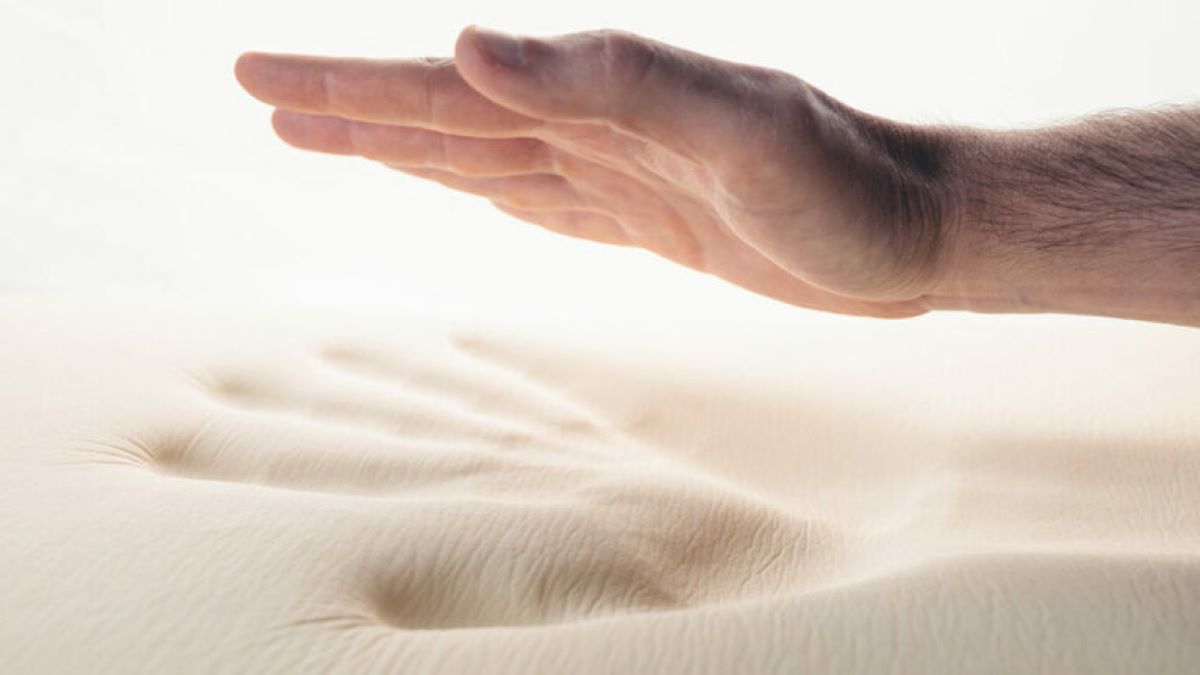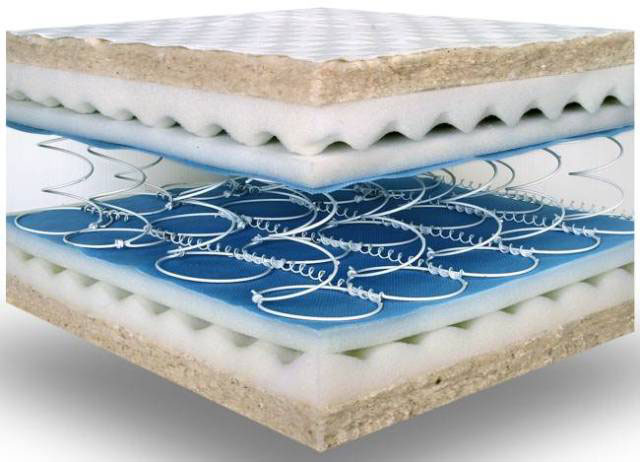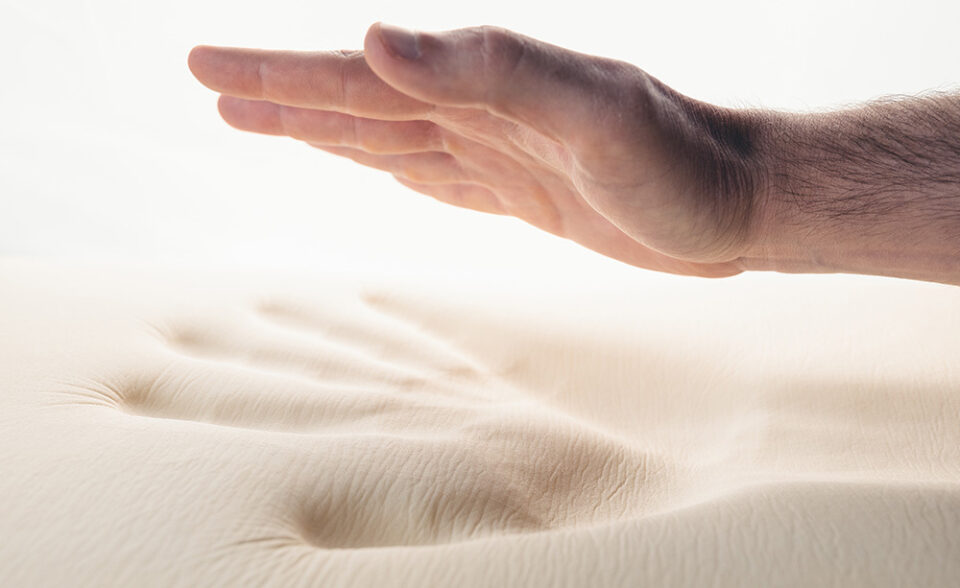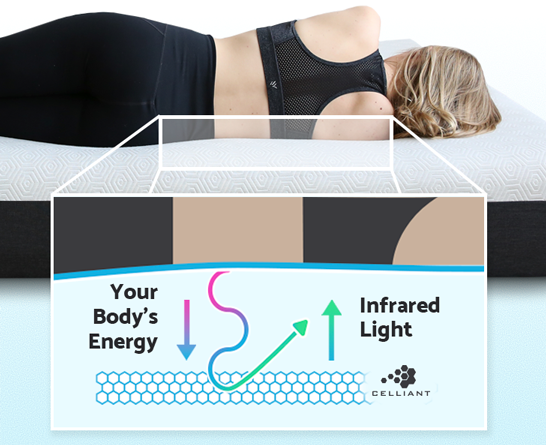
December 6, 2019
How the thermal effusivity of a mattress can impact your sleeping patterns and what thermal materials promote a restful environment
Getting a quality sleep every night is an important aspect of maintaining a healthy body and lifestyle. The human body would not be able to survive without sleep as it helps maintain many the body’s vital functions. Adults between the ages of 18-64 require 7-9 hours of sleep every night and 1 in 4 adults are not meeting this standard.

Figure 1. Mattress contribute to a good night’s sleep1
The comfort of a mattress can be a major factor that influences an individual’s quality of sleep. Mattresses are one of the oldest house-hold furnishings as archeologists have discovered mattress artifacts that date back over 77,000 years ago. Since then, the science behind the comfort of a mattress has improved dramatically as new technologies aim to combine a variety of materials to create the perfect sleeping surface.
One of the main disruptions of a good sleep is an uncomfortable environment. An ideal room temperature for a quality sleep lies between 16°C and 18°C and temperatures higher than this can drastically alter sleep patterns. Sleeping on a mattress that can provide a cooling effect has the potential to extremely improve an individual’s sleep.
The “cool” feeling delivered by certain mattresses when touched is directly related to the thermal effusivity of the mattress material. Thermal effusivity refers to the ability of a material to exchange heat with its surroundings.
An example of thermal effusivity is the cold feeling exhibited by a piece of metal when touched. Metals have a high thermal conductivity and are quick to absorb heat from their environments. When a hand encounters the metal, the metal quickly extracts heat from the hand and disperses it. The speed of this interaction makes the metal appear cold to touch.
Wood is a material with a low thermal conductivity that appears room-temp or warm to touch. This is due to the wood atoms extracting heat from the hand at a much slower rate compared to the metal atoms. Choosing a mattress that is composed of materials with high thermal effusivity values will generate a cooler sleeper environment as heat can be more easily exchanged with the surrounding environment.
Latex mattresses are one of the most popular varieties on the market as they are a firmer alternative to memory foam. Latex is frequently made from natural and organic materials that are hypoallergenic and dust resistant. These mattresses are extremely responsive and bouncy. They also allow extra space between a sleeper and the mattress surface. This additional space enables trapped air to circulate creating a cooler environment.
Latex is naturally a material with a low effusivity and feels relatively warm to touch but still has better circulation and effusivity than memory foam. Spring mattresses are another popular alternative to a “cookie cutter” memory foam mattress. The coiled springs create space between tightly packed mattress fibers allowing air circulation and heat convection. More convection within a mattress can help move excess body heat away from the sleeper and make the mattress appear cooler to the touch as more heat is extracted.

Figure 2: Cut-away depiction of a spring mattress
Memory foam is currently the most popular mattress material on the market. It gained its popularity by being highly versatile and having a huge range of applications. Memory foam was first designed in the mid 1960’s to be used as NASA airplane seat cushions to increase comfort for long travel periods. It uses body heat to mold into a specific shape around an individual’s features eliminating direct pressure to specific areas of the body. Although memory foam is extremely comfortable, it has a very low thermal effusivity and greatly restricts air flow. It is composed of polyurethane foam which is one of the most popular home insulation materials having a thermal conductivity of 0.002 – 0.0035 W/mK.
All foams naturally have a high porosity and contain many air and gas filled pockets. Air and most gases have a low thermal conductivity and when present in a material can restrict convection and effect a materials heat transferring abilities.

Additional substances can be incorporated into a memory foam mattress to increase its thermal effusivity and help the mattress feel cooler to the touch. One of the most popular additives is gel particles. These gel particles are like those found in sports equipment and re-usable icepacks. The addition of gel to a foam mattress can dramatically improve its thermal effusivity and conductivity, however, it does come at a cost.
A memory foam mattress including cooling gel costs an average of 5 – 20% more than a standard polyurethane foam mattress. Many gel mattresses also contain a substance known as a phase changing material (PCM). A PCM is a non-toxic, non-flammable substance that can help regulate body temperature and absorb excess body heat. Some other materials that are incorporated into a memory foam mattress to increase cooling abilities include copper, bamboo and celliant fiber.
Copper has the third highest thermal conductivity of all known materials with values measured at 386 W/mK. Its conductivity values are 20,000x’s higher than conventional polyurethane foam so when included in a mattress, copper can substantially increase its heat transferring abilities. The high thermal conductivity and effusivity of copper makes it a great addition to a mattress that will promote heat exchange and raise convection levels. Copper is naturally an antibacterial metal that can help prevent fungi and bacteria growth in a mattress. Including trace amounts of copper in a memory foam mattress can have large impacts on its thermal performance.
A bamboo mattress cover is another addition that can increase the thermal effusivity and promote more effective heat transfer. Bamboo is a natural material composed of extremely air and moisture permeable molecules that enable it to have impressive moisture wicking abilities (2x’s stronger than cotton). A bamboo cover can assist in creating a dry and comfortable environment for a sleeper and can be used overtop of any mattress size and variety.
Celliant fiber is a synthetic material made from 13 naturally occurring minerals combined with polymer resign. This material is designed to absorb energy admitted by the body and transform it into infrared energy by altering the wavelength. This cutting-edge technology is designed to improve an individual’s tissue oxidation, regulate body temperature and increase circulation. Celliant fiber covers are a mainly made of polyester along with additional minerals and make up about 1/5th of a mattresses thickness. According to clinical trials conducted at UC Irvine, celliant sleepers spend a lower amount of time awake after falling asleep than non-celliant sleepers. The ability of a celliant cover to turn excess body heat into infrared radiation appeared to directly lower the sleeping surface temperature and enabled the user to rest peacefully.

Figure 4: Diagram displaying how celliant mattresses can change body heat into infrared energy
Some additional ways to lower a sleeping environments temperature is to clear space around a mattress allowing for more air flow. Additional air flow can facilitate convection and heat transfer that will move hot air trapped inside a mattress outside and bring cooler air in. Having a solid wood bedframe can also make it difficult for air to circulate throughout a mattress. A metal bedframe or no bedframe is a better option for increased air flow and thermal effusivity.
As the world seems to spin faster and faster everyday it is more important now than ever to maintain a healthy body by getting the correct amount of sleep. Selecting the right mattress that will promote a long, comfortable sleep can be a difficult task to be faced with. As technologies continue to advance so does the complexity of a something as simple as a mattress. A comfortable sleeping temperature is one of the most important aspects of a good sleep and can be impacted by the material a mattress is made of. Selecting a mattress made of a material with a high thermal conductivity and thermal effusivity can help create a cooler and more comfortable sleeping atmosphere that can give the body the rest it needs to function properly.
Public Health Agency of Canada. (2019, March 14). Government of Canada. Retrieved from https://www.canada.ca/en/public-health/services/publications/healthy-living/canadian-adults-getting-enough-sleep-infographic.html
The science behind a better nights sleep, Celliant fiber. (n.d.). Retrieved from https://www.havenmattress.ca/blogs/natural-plant-based-memory-foams-make-for-better-sleep/the-science-behind-a-better-nights-sleep-celliant-fiber
Which Is Better: Latex or Memory Foam Mattress? (2018, July 20). Retrieved from https://www.mysleepyferret.com/latex-vs-memory-foam-mattress/
Wool Vs Down Comforters. (n.d.). Retrieved from https://www.thewoolroom.com/us/blog/wool-vs-down-comforters/
Majumdar, A., Mukhopadhyay, S., & Yadav, R. (2010). Thermal properties of knitted fabrics made from cotton and regenerated bamboo cellulosic fibres. International Journal of Thermal Sciences, 49(10), 2042-2048. doi:10.1016/j.ijthermalsci.2010.05.017
Images Sources:
1Image by congerdesign from Pixabay
https://oursleepguide.com/
https://www.topmattress.com/
Author: Kallista Wilson | Junior Technical Writer | Thermtest